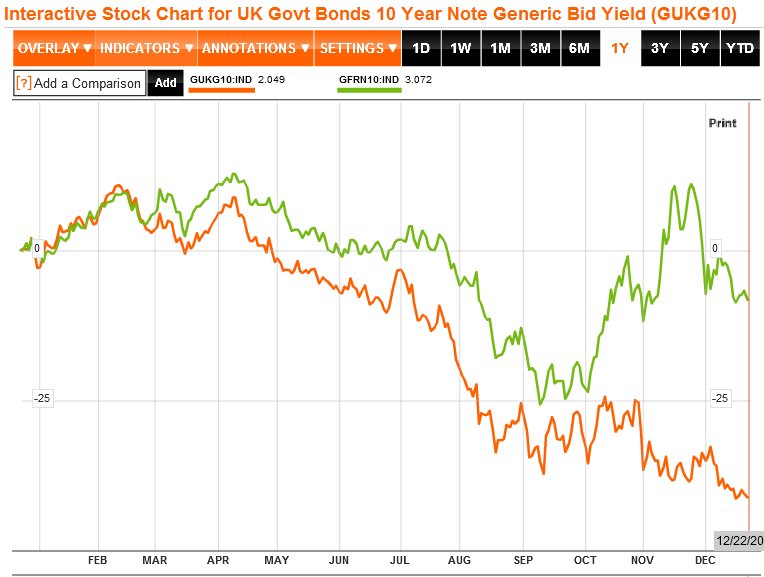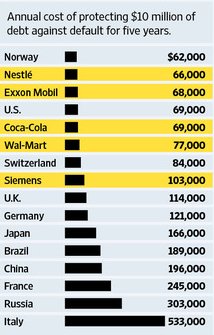Data exclusive to People newspaper today from our platform UKCrimeStats – 50 worst crime streets http://t.co/TUD6PFPP see paper for detail
Data exclusive to People newsp…
January 8th, 2012Crime still falling in the USA – why?
January 7th, 2012Posted: January 7th, health clinic 2012 Author: Dan No Comments »
Of course our site – www.ukcrimestats.com – is about British crime statistics, stuff but we can’t ignore what’s happening in America. The big picture is that nationwide in the USA, crime has fallen a lot and continues to fall even through the recession and on the way out. The hard question is why?
As this flies in the face of conventional wisdom, with rising unemployment and declining living standards, plenty of academics have got egg on their faces. Perhaps then, in the face of such inaccurate forecasting, criminologists are becoming the new economists?
Well a couple of guests on this must listen to and well-balanced radio discussion programme on America’s NPR on falling crime in the USA have some pretty firm views of why it happened – a couple of which I’ve reproduced here. You can freely download the mp3 too – so much easier to listen to in the car than sitting in front of your pc.
Bill Bratton weighs in and argues that better Policing in NY and LA should take the majority of the credit because they targeted behaviour rather than “causes” like poverty and weather etc. which he downgrades to partial influences (quite rightly in my view). Charles Lane of the Washington Post points out that in the 90s the prison population grew 5 times faster than the population itself at 6.5% per annum. The challenge for the decade ahead though would be not just dealing with fewer resources dedicated to crime-fighting and law enforcement, but also how to get a large proportion of these inmates back into society and not relapse into crime as they would be released over the coming decade.
Many of us Brits will already have heard of Bill Bratton, his work and quest to become the first foreign-born head of the London Metropolitan Police. For background on Charles Lane, read this detailed piece by him from late last month here that highlights the peace dividend from falling crime.
The discussion came about because academic criminologist, Franklin E. Zimring, wrote this book The City that Became Safe – New York’s Lessons for Urban Crime and its Control. There seems be to an abridged pdf of 29 pages here too if you don’t want to buy the book – I haven’t read it yet.
It strikes me that the level of debate on crime and more importantly, the freedom of Police Forces to experiment, is far more advanced in America than it is here. For all that, based on a national arithmetic mean – almost totally useless as that is ! – recorded crime is still generally lower in Britain than America.
New post from our platform UKC…
January 7th, 2012New post from our platform UKCrimeStats http://t.co/Uk3mrDMX Crime still falling in the USA – why?
Going green isn’t easy when …
January 5th, 2012Going green isn’t easy when we’re so in the red CityAM: http://t.co/tZ5YcM5d great piece by my IOD colleague Corin Taylor re: our next opus
If only UK could buy nat gas a…
January 4th, 2012If only UK could buy nat gas at $3 rather than >$8 per MMBTU – imported US shale gas will close the gap – Bloomberg http://t.co/5xgxJ0kr
UKCrimeStats now showing historic street crime data by street
January 3rd, 2012Posted: January 3rd, cure 2012 Author: Dan No Comments »
We have just rolled out a new capability to UKCrimeStats – a unique page with monthly history for every street (see our streets page here) that has had a crime on it. Here is London’s Oxford Street – scene of a terrible gang murder right in the middle of the Boxing Day.
As you’ll see from our National Picture page, thus far we have approximately 6 million crimes and ASB events spanning 12 months of data. Each of these are mapped to around 450,000 “snap points” which are the given latitudes and longitudes of on or near a street close to where the event actually took place by the authorities to protect victims’ anonymity and ongoing legal/investigative proceedings.
Population is nearly everything in crime – read this academic paper An Excursus on the Population Size-Crime Relationship. After all, with no people, there is no crime. The trouble is how to allow for the impact of population on measuring crime. One solution is the crime rate which measures crime per static 1,000 residents in a selected area. The limitation of measuring crime by crime rates is both criminals and victims like to move and resident population data is only as good as your last census.
What we don’t know is the actual mobile throughput of population in a given area which would give us a much closer understanding. That’s why Oxford Street stands out as such an interesting example. Despite it’s size and high and mobile population, it has only one snap point and so quite a lot of recorded crime. And just like for all our streets, we have no static resident population data – meaning that a very long road with many residents can’t be compared with a short one with a few village houses. We can nonetheless assume that very few people live on or around Oxford Street as residents compared to the number of visiting shoppers.
It’s a safe bet though that Oxford Street – the nation’s premier High Street, has a phenomenal throughput of bargain and style-seeking consumers which means that if you were able to deflate crime in Oxford Street for the number of people going through it, the level of crime would actually be much, much lower that it would appear – currently no. 8 for November of streets in England and Wales.
New post & capability from our…
January 3rd, 2012New post & capability from our platform UKCrimeStats http://t.co/OGRMzvb9 – historic street crime data by street
France’s debt risk: CDS spreads or 10 year bond yields?
December 23rd, 2011Ok – so much for France’s leaders instructing the ratings agencies to downgrade Britain. I don’t think for a moment that things are that great here but those agencies will have noticed that the UK’s position is better than France for some of the following rather important reasons;
i) Longer average maturities of British government bonds (gilts, we should say) – 13-14 years versus 7-10 years for France. This means that the French government has to raise more capital over a shorter period of time to pay its bills.
ii) Less foreign ownership of those government bonds – the BoE owns a lot – purchased from financial institutions – due to quantitative easing and will not dump them anytime soon, making yields shoot up
iii) Much, much less exposure of UK banks to Southern European sovereign debt – particularly Greece
For these reasons and some others, the UK government currently (as at 22/12/2011) pays just over 1 % less for 10 year debt – 2.049% versus 3.072% – as per the chart from Bloomberg below.
That’s bad enough. But yesterday I caught sight of a fascinating article in the WSJ, Super-Safe Assets Run Short Around Globe. As this table from the article shows, safety conscious investors appear to be putting a much higher premium on the cost of insuring French debt against default – more than two and a half times – than the UK’s over 5 years. In fact, the UK is even ahead of Germany.
CDS spreads are not a perfect guide to the future of course. And I’m not sure about Switzerland being behind the USA. Still, they do give us a rather more complete picture that includes investor sentiment – and right now, that is looking far from reassuring.
You can’t always blame crime on the weather
December 18th, 2011Posted: December 18th, 2011 Author: Dan No Comments »
Last week, the Sunday Times used UKCrimeStats data – all of which in it’s raw form is freely available from Police.uk – to run a news feature entitled Austerity crimewave hits Britain. It was subsequently picked up by a number of other papers and radio stations. For obvious reasons, with a new recession probably on the way and public sector cuts just starting to come through, mostly in local government – many people are keen to see if there is any correlation to the overall crime rate or at least acquisitive crime.
Here’s the data in an open office spreadsheet which was always available free to view from our Police section with a small amount of exporting and formula work which I’ve done for you. There are a number of points that need to be made and have not been yet debated;
1. The Weather: According to a piece in today’s Sunday Sun and quoting UKCrimeStats- “POLICE say people in the North are turning to a life of crime to make “ends meet” after Government cuts” by Michael Brown. As you’ll see from the spreadsheet, the comparison is between monthly December 2010 and October 2011 totals. To paraphrase the article “ . . . these show that burglary rates were 55.5% higher in Cleveland in October 2011 compared to December last year, while in Northumberland robberies have apparently rocketed”. But “ Northumberland Police assistant chief constable Jim Campbell rejected any comparison as “nonsensical” and blamed snow for the rise. “December 2010 was a month which saw the most severe weather conditions experienced in the north east for a generation,” he said.“The extreme weather conditions lasted throughout the entire month and undoubtedly suppressed crime levels across the entire force area”.
That would make sense if you were to view Northumbria and Cleveland in isolation. The trouble is that the whole country had bad weather in December 2010, it was a national whiteout.

I do think there is a correlation between bad weather and lower crime and soon we will be overlaying weather data to have a more precise understanding of the correlation. The trouble is, Northumbria’s criticism doesn’t account for other parts of the country – that also had bad weather conditions – showing a marked fall in crime from December 2010. Was there an unknown freak mini-heatwave going on in the areas administered by Gwent Police in Wales and Thames Valley Police which both showed a 19% drop in burglaries? Soon with our weather data, we will be able to look back and know.
2. Month to month comparisons may not be perfect, but they are valid and interesting: I do agree that in the ideal academic world, to smooth out a seasonal variation, one month’s data should only be compared to that of the same month a year earlier. And then truth to tell, I don’t really agree. The Police themselves look at a time series of data, daily, weekly, monthly – with much more temporal granularity. They don’t wait 12 months to find out what’s really going on. Patterns and differences can emerge quite quickly over 43 Police Forces – it only takes 3 data points to see a trend and a fourth to break it, if it even exists. It is nonetheless a reflection of what’s happening on the ground, across the country between two different time points. If the 43 Police Forces would like to release another 12 months of historical data prior to December 2010, we would be more than happy to upload it to UKCrimeStats.
3. The data should decide the headline, not the other way round: if you look at Cleveland’s page on our site, perhaps the most interesting question is not so much the jump between December 2010 and October 11 which was 55%.
It’s much more about the jump from Dec to January where it has remained remarkably flat – irrespective of the weather. I wonder what it was for November 2010? Media stories about rising crime may pique everyone’s interest more easily, but we should be equally fascinated in learning where and why it has fallen in other areas at the same time. There’s a story there too. Were those Forces pursuing different policies or is it something completely unrelated? As you’ll see from our spreadsheet there is a far from uniform pattern of seasonal variation.
4. The days of the Home Office and Police Forces presenting crime statistics on their own terms with the best possible spin are (nearly) over: the crime data is out there available for everyone to see – it’s unrealistic to expect everyone to interpret it the way you’d like them to. Anyone looking at this site is free to draw their own conclusions based on what range of data they select. We have no control over that.
But let’s be clear – I have great admiration for the Police. Theirs is a very difficult job, damned for being too soft or too hard in a very political environment when most of them probably joined up thinking they were going to just fight crime – not ingratiate themselves with or go up against pressure groups and politicians. And as I have said here before, I reject entirely the idea that crime or the lack of it is 100% linked to Police effectiveness (although if you read Cost of the Cops by Policy Exchange, there’s obviously much room for improvement). We are a post-religious society, broken in parts that is trying to find a new balance between freedom and responsibility. So I do support the idea of elected Police Commissioners. Not because this may lead necessarily to better policing policies that reduce crime although it probably will in the long run. Moreso because I sense that it is a far better method of getting more of the public to engage with the issues, restore faith in Law and Order and develop a sense for what is achievable and what is not.
EPC and platform UKCrimeStats in the Sunday Times today
December 11th, 2011A major news feature in the Sunday Times today which draws on our increasingly successful platform, ask UKCrimeStats. All the data for the article, patient Austerity Crimewave hits Britain, comes from UKCrimeStats which the EPC owns.


